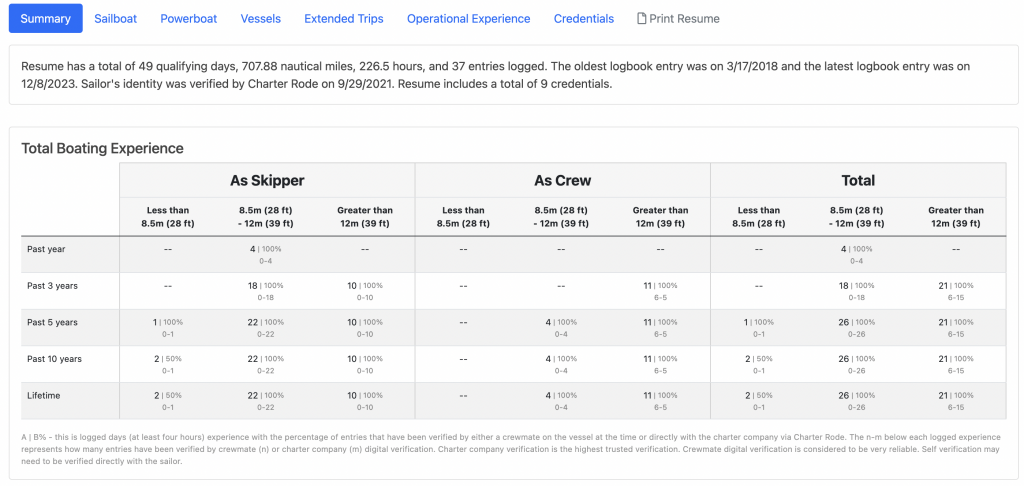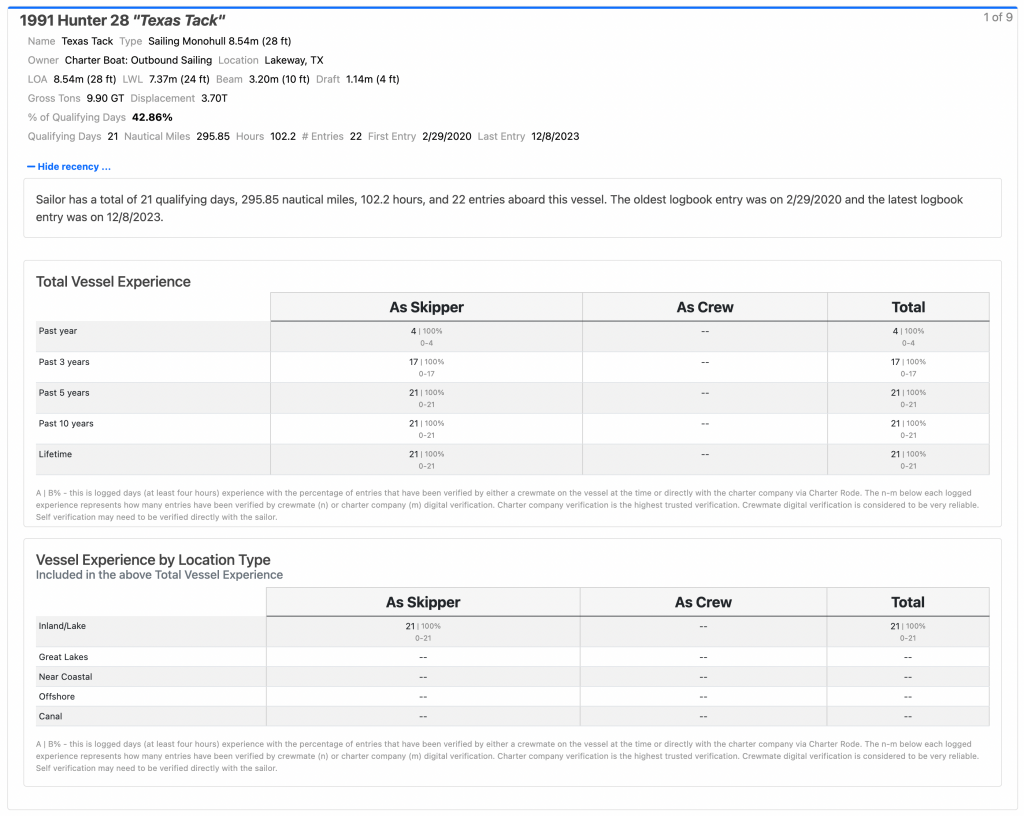
A sailing resume or boating resume summarizes your relevant boating experience. Your sailing resume is used by insurance companies, banks, charter companies, and others to determine your seaworthiness and overall risk on the water.
So what’s the big deal?
After all, you already have insurance for your yacht, right? Even if you already have insurance, you should be tracking and updating your experience. If you ever have had the thought of going bigger (yacht size) or jumping from a monohull to a catamaran, you are going to be asked a lot of questions and forced to jump through a lot of hoops. Even after all that, you still may find it challenging to get the insurance you need to have the freedom to cruise where you want to be.
Adam Meyer from Maritime Insurance International was my guest on a recent webinar I hosted for the Salty Dawg Sailing Association. Our discussion covered the changes in the yacht insurance market and the importance of an accurate and up to date sailing resume. Salty Dawg members can catch the recording free of charge. Adam noted that “underwriters are paying more and more attention now not just to the list of boats that you say you’ve owned; they want to know where did you navigate that vessel.”
Even if you are not changing vessels, in today’s market you should expect to be shopping around your renewal. Rates continue to significantly increase year over year. You will want to proactively include your updated sailing resume documenting your operational experience. This, along with other information, helps underwriters create a risk profile for insuring you and your vessel. If you don’t provide it up front, don’t be surprised if an underwriter comes back and asks for it.
What Makes a Good Sailing Resume?
Not all sailing resumes are created equal. A good sailing resume will be straightforward, easy to read, and include relevant boating experience. The USCG (US Coast Guard) sets a standard of four (4) hours of underway time equates to one (1) day of service (for vessels under 100 GT). Using this standard, your sailing resume should summarize your total operational experience as skipper and crew, and the recency of this experience. Below is the summary section from my sailing resume.

Notice how it clearly indicates the total experience I have documented and then just below breaks that experience up not only by role (Skipper vs. Crew), but also by relative vessel length. Within 30 seconds you know the type of hands-on experience I have aboard relative vessel sizes.
Insurance carriers specifically want to know this information vessel by vessel. They want to know who owns the vessel you regularly use, and increasingly how regularly you operate the vessel as either skipper or crew. On your sailing resume, include information such as:
- Vessel – year, model, manufacturer, owner, ‘home’ location, LOA, LWL, beam, draft, gross tons, and displacement.
- Qualifying days (USCG standard), nautical miles, and hours underway.
- Recency of experience aboard vessel – past year, three years, five years, ten years, and lifetime.
- Location of experience aboard vessel – waters navigated and frequency.
Below is an example from my sailing resume:

Once again it is very easy for the reader to understand the necessary information as to the type of experience I have documented for this specific vessel. For each vessel you have experience aboard, you should create a separate section documenting the experience for the vessel. Keep the format consistent for each vessel listed on your resume making it easy to read.
I take a few minutes after completing each sailing trip (single or multi-day) to create a logbook entry using the Charter Rode app. The app automatically updates my sailing resume and saves me hours of manually updating my resume to share with others.
Final Thoughts
Keeping an up-to-date sailing resume is increasingly becoming a standard that all mariners will need to embrace. Insurance companies will continue to require more and more detailed documentation of our experience vs. relying upon boat ownership as a proxy.
Good sailing resumes have a flow and tell a story. Start by introducing your overall experience (summary section) and then provide a listing of your current credentials, certifications, or relevant courses. Finally provide the vessel-by-vessel sections with the most relevant vessel listed first – the one where you have the most amount of your experience aboard. You are aiming for an organized and well thought out document that is easy to read and understand.
The last thing you want is an unorganized resume preventing you from getting the insurance you need to cruise the waters you dream of.


